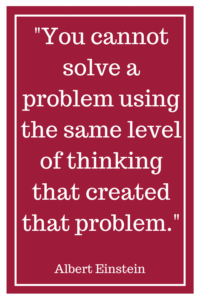“You cannot solve a problem using the same level of thinking that created that problem.”- Albert Einstein
The pain that comes from trauma and abuse is so agonizing it’s no wonder that one seeks relief from it. Self-medicating with substance abuse is a common way to numb these excruciating feelings. When the emotional pain is buried by the substance use, the compulsive focus becomes the ritualized behavior needed to continue the substance use. The compulsive mindset of substance use ultimately interferes with daily living and relationships.
The habits, rituals and lifestyle of substance use become as important as the self-medicating escape of emotional pain. The ritual stage of addiction involves seeking or engaging in the same behavior, with the same people and at the same time of day. The individual will develop a lifestyle that is centered around the substance use or specific activity. Ritualistic habits create a sense of security and control, but the behavior continues to pose a threat to our well-being. Addicts often become fixated on these established routines which then overshadow the priorities, commitments, and responsibilities to ourselves, our families, colleagues, and friends making them far less important.
 Compulsive habits and behaviors soon become another method used to avoid the feelings of poor self-confidence, poor self-worth as well as overwhelming anxiety and stress. The compulsive behavior provides a false sense of normalcy and control; distracting one from addressing the original and underlying issues of trauma and pain.
Compulsive habits and behaviors soon become another method used to avoid the feelings of poor self-confidence, poor self-worth as well as overwhelming anxiety and stress. The compulsive behavior provides a false sense of normalcy and control; distracting one from addressing the original and underlying issues of trauma and pain.
To successfully treat a substance use disorder the focus of treatment must be on the function of the addiction cycle; identifying the underlying issues and unresolved trauma behind most, if not all, addictive patterns. Successful treatment opens the mind and unravels the underlying issues for each person’s unique addictive and mental health issues, recognizing the delicate and complex interplay between psychological, chemical and physical aspects of recovery, and addresses the “Whole Person.”
Photo by Jaelynn Castillo on Unsplash
Other articles you may be interested in:
- Driving Your Recovery by Julie Jeter
- What Influences Substance Use Disorder In Our Culture? by Rachel Graham
- Saying Goodbye to a Friend – The Disease of Addiction by Julie Jeter
- We Are All Recovering From Something by Julie Jeter













